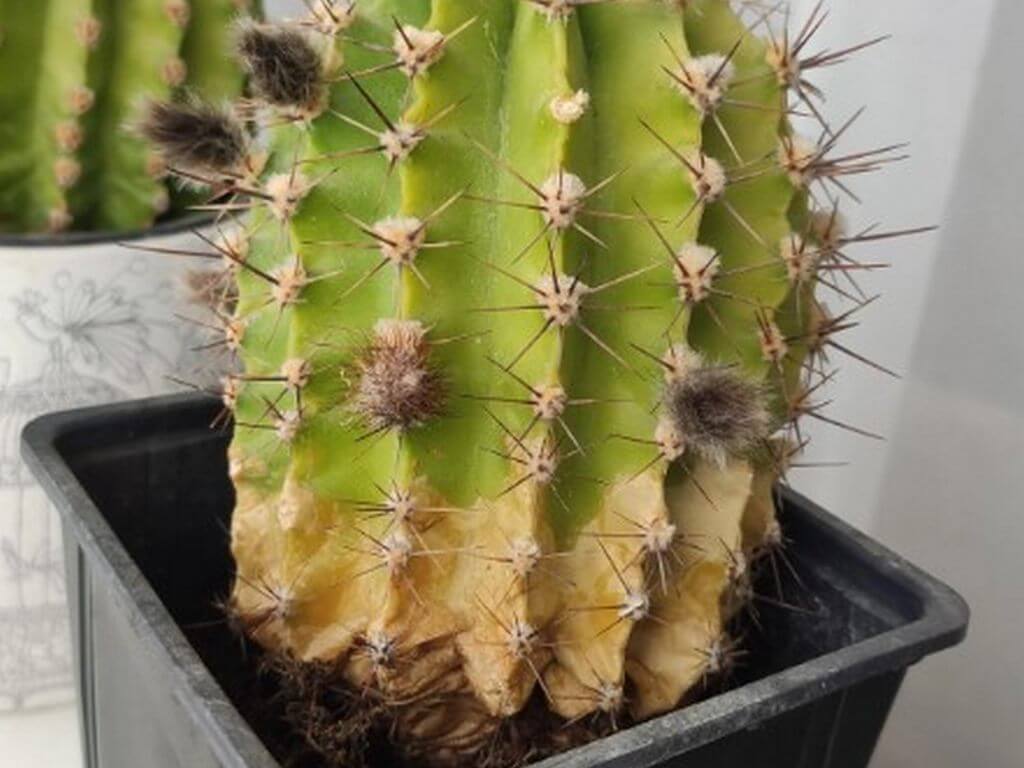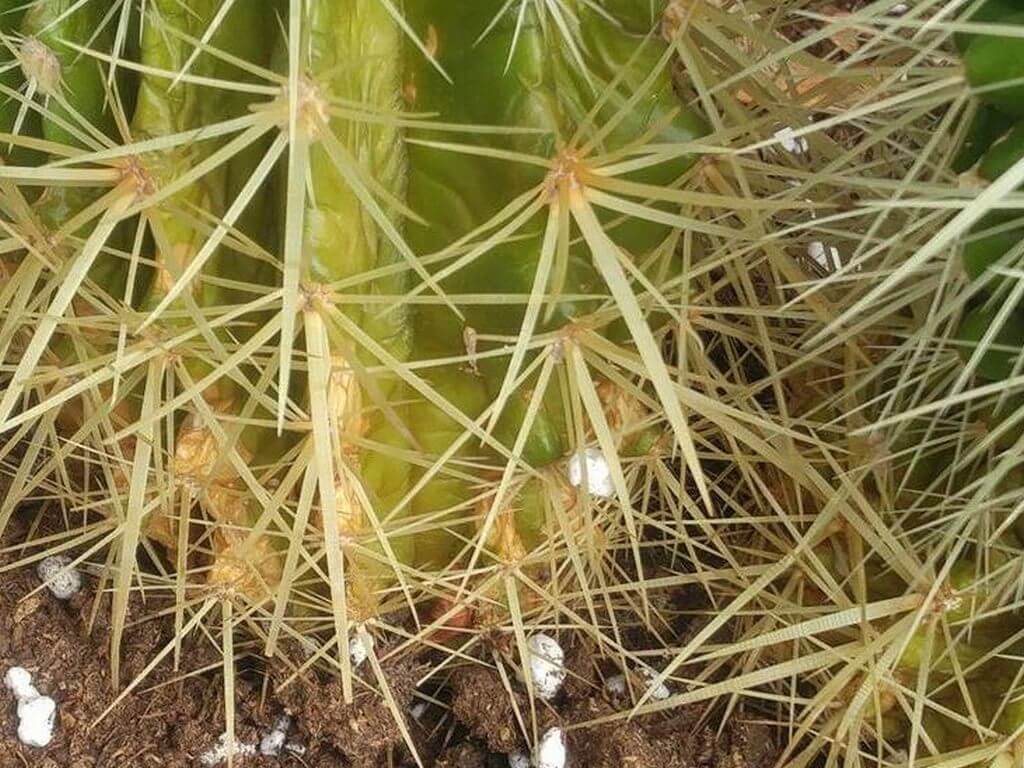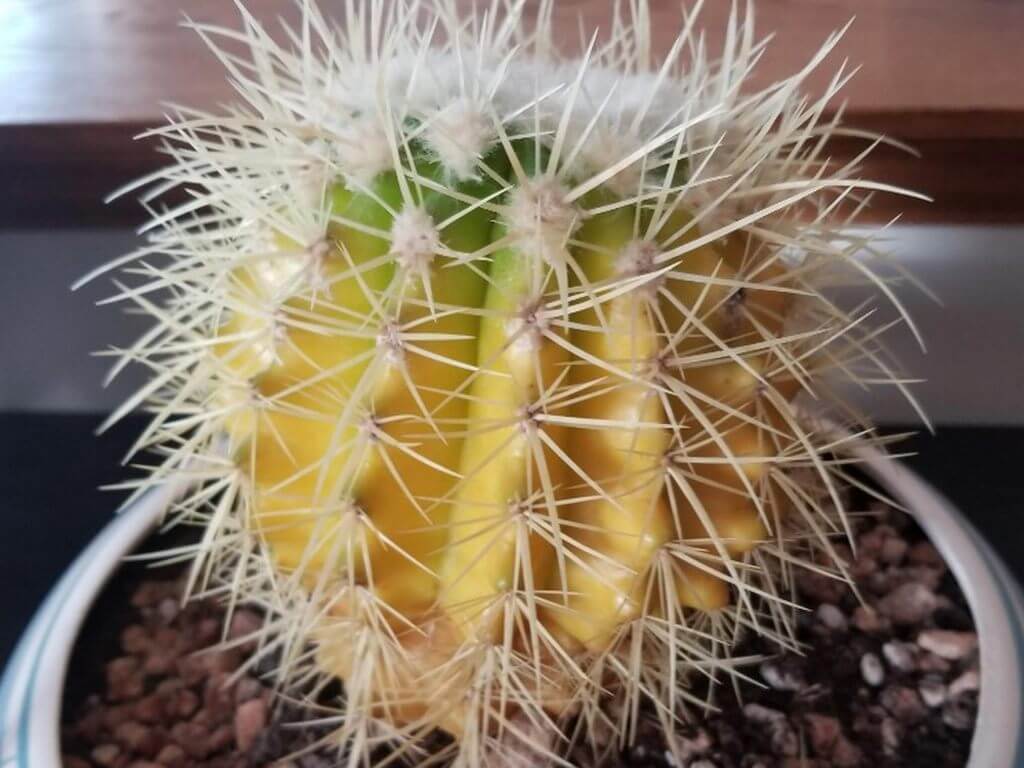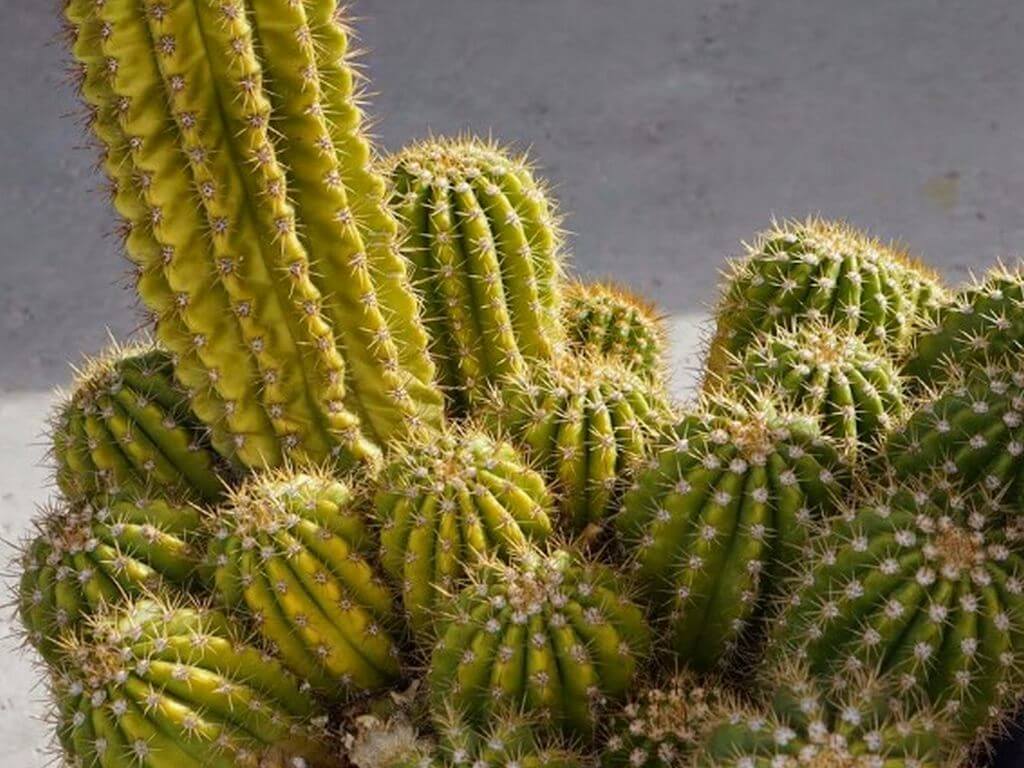Gardeners fear when succulent leaves turn from green to yellow.
Is this a sign of impending doom for your beloved plant child? Have you made some fatal error in caring for your living succulent sculpture? Take a deep breath. Yellowing leaves on a succulent, while alarming, do not mean disaster.
People love succulents because they’re easy to care for and can grow well indoors with little light. But, desert dwellers have specific preferences when it comes to their growing conditions.
Get something wrong, and your Echeveria starts sending up a yellow distress signal. Succulent leaves turn yellow due to improper watering, sunlight, temperature, or soil conditions.
By doing some investigating and making small changes to how you take care of it, you can usually revive that juicy plant to a vibrant green state.

Overwatering: The #1 Cause of Succulent Yellowing
Overwatering tops the list as the most common reason succulent leaves turn yellow. Succulents store water in their leaves and stems, and prefer infrequent deep watering. Too much moisture causes root rot and leaves to yellow and drop.Signs of overwatering include:
- Soft, mushy, almost translucent leaves
- Leaves yellowing from the center or bottom up
- Brown or black spots on leaves
- Leaves dropping easily from plant
To fix overwatering:
- Allow soil to dry completely between waterings
- Water less frequently, waiting until leaves look slightly shriveled
- Check for root rot and repot with dry soil if needed

Underwatering: Too Little Water Also Causes Yellowing
Overwatering and infrequent watering both cause yellowing and shriveling of succulent leaves. Succulents can survive in drought, but they need some deep watering to thrive. Signs of underwatered succulents include:
- Leaves appear wrinkled, shriveled, or deflated
- Lower leaves turn yellow first
- Soil is completely dry all the way through the pot
When a succulent doesn’t get enough water, it becomes stressed. The plant’s lower leaves turn yellow when it absorbs moisture and nutrients to survive. If the plant is underwatered for a long time, it becomes even more dehydrated and more leaves turn yellow and fall off. If neglected for too long, the entire plant can dry up and die.
How to Fix Underwatering
Luckily, an underwatered succulent can often be revived with a good soak. Here are some tips:
- Water the plant thoroughly, until water drains freely from the bottom of the pot. This ensures the soil is completely saturated.
- Check the soil before watering again. Wait until the top inch is fully dry before watering again.
- During hot, dry weather, succulents need more frequent watering. Don’t stick to a fixed schedule.
- Provide additional water during growth spurts when the plant is using more moisture.
- Consider repotting in a fast-draining soil mix if water doesn’t penetrate well.
Create a watering schedule that suits your plant and conditions to avoid underwatering again. Succulents don’t need frequent watering, but they should be given a deep drink when the soil dries out to keep them hydrated and happy. Pay attention to your plant’s needs and adjust your watering accordingly. By experimenting, you can discover the perfect moisture level to avoid dryness and keep leaves healthy.

Sunlight Imbalance: Too Much or Too Little Light
Succulents thrive in bright, direct sunlight. But too much harsh light or too little sunlight can also cause the leaves to yellow. Finding the right sun exposure is key.Too little light leads to:
- Stretching and etiolation as the plant reaches for sunlight
- Lower leaves yellowing and dropping off
- Lackluster color and growth
Too much direct sun causes:
- Sun scorch – brown or yellow spots
- Crispy, dried leaf tips
- Leaves shriveling or burning
To fix sunlight issues:
- Move to a sunnier spot if leaves are pale and stretching upward. Provide at least 4-6 hours of direct sun.
- Add a sheer curtain to soften harsh midday sun if leaves are scorching.
- Slowly acclimate the plant to increased light levels to avoid sun shock.
- Rotate the pot regularly so all sides get even sunlight exposure.
- Provide bright, indirect light from a south or west facing window if direct sun is too harsh.
Getting the right balance of sun keeps succulent leaves full, colorful, and vibrant. Monitor your plant and adjust its location until conditions are ideal. Proper sunlight prevents many causes of succulent leaf yellowing.

Temperature Extremes: Keeping Succulents Comfortable
Succulents need the right amount of sunlight, water, and temperature to stay healthy. Extreme heat or cold can stress plants, causing yellow leaves. Succulents like warm temperatures, around 70-80°F. Outside this range, problems can arise.
- Hot temperatures above 90°F can scorch leaves, causing yellowing, shriveling, and sunburn.
- Cold temperatures below 50°F can shock the plant. This is especially problematic if cold comes suddenly, without proper hardening off.
- Rapid temperature swings cause stress. Succulents prefer consistent warmth.
To help succulents cope with temperature extremes:
- Move plants away from hot, dry windows or heating vents that blast hot air.
- Avoid placing succulents in cold drafts from doors or air conditioning vents.
- Provide proper indoor temperatures year-round. Supplement heat or AC as needed.
- Allow outdoor succulents to harden off slowly before winter dormancy.
- Use shade cloth to protect outdoor plants from intense summer sun.
With the right balance of sunlight, water, and ideal temperatures, your succulent will continue to thrive indoors or out. Keep a close eye on the conditions and make changes to avoid stress. If you notice yellowing lower leaves or other signs of damage from temperature, act quickly to improve the environment. Proper care ensures your succulent stays happy and healthy for years to come.
Nutrient Deficiencies Can Lead to Yellowing
In addition to water and sunlight issues, a lack of nutrients can also cause succulent leaves to turn yellow. Succulents need a good mix of nutrients to grow healthy. If they lack nutrients, it can cause problems.
- Uniform yellowing of older leaves first
- Stunted or abnormal growth
- Lackluster color in new leaves
Overwatering or sunburn causes yellowing in spots or patterns on leaves. If a succulent doesn’t have enough nutrients, it can’t make the green pigment chlorophyll for photosynthesis. This leads to the yellow color as other pigments show through.

Fertilizing to Prevent Deficiencies
To avoid nutrient deficiencies:
- Use a balanced cactus or succulent fertilizer every 2-4 weeks in the growing season.
- Repot in fresh soil annually to replenish nutrients. Old soil gets depleted over time.
- If repotting, choose a soil mix amended with slow-release fertilizer.
- Rotate plants to a new spot each year to expose them to different soil conditions.
With a regular fertilizing regimen tailored to succulents, you can prevent the gradual yellowing that signals a nutrient deficiency. Pay attention to new growth, and fertilize at the first sign of less than vibrant color or stunted leaves. Thriving succulents will reward you with robust and colorful growth.
Pests and Diseases Can Lead to Yellowing
Succulent leaves can turn yellow because of environmental factors, pests, or fungal diseases. Keep a close watch to catch issues early.Common succulent pests like mealybugs, aphids, and scale insects can all cause yellowing. Signs include:
- Tiny bugs visible on leaves and stems
- Sticky residue or black mold on leaves
- Distorted or stunted new growth
Solutions include using insecticidal soap, neem oil, or other organic pest treatments. Isolate affected plants to prevent spreading.Various fungal diseases also lead to yellowing. Look for additional signs like:
- Black or brown spots on leaves
- White powdery coating on leaves
- Rotting stems
Improve air circulation between plants and treat with copper fungicide or sulfur powder. Remove and destroy infected plants. Catching pests and diseases early makes treatment easier. Inspect plants regularly for any signs of infestation. Keep tools and hands clean when handling to prevent spreading issues. With prompt treatment, an affected succulent can recover and regain its vibrant colors.
Natural Coloring – Not Always a Cause for Concern
It’s easy to panic when you first notice your succulent’s vibrant green leaves fading to yellow. However, it’s normal for certain succulents to change color. They may turn yellow due to factors like increased sunlight or lack of water. This is the plant’s way of protecting itself, and the coloring is harmless.Signs this is natural include:
- Just the tips turn yellow, not the whole leaf
- New growth still looks healthy
- Plant seems vigorous overall
When succulents like Aeonium, Echeveria, and Sempervivum are stressed, their leaves can turn bright yellow. This is their natural sun-stress coloring. As long as the overall plant looks healthy, let these sunset shades be. They add beautiful contrast to the succulent’s appearance. Varied colors on leaves are normal. But if whole leaf turns yellow or new growth is harmed, check for overwatering or pests. Don’t assume it’s harmless without a thorough inspection first.When in doubt, a wait and see approach is prudent. Give the plant a week or two to recover on its own before taking action. A watchful eye and prompt response at the first sign of trouble will keep your succulent thriving.
Transplant Shock Can Lead to Temporary Yellowing
Repotting a succulent into fresh soil can disrupt its roots and cause transplant shock. This stress may cause some leaves to yellow and drop off. Yet, this effect is usually temporary as the plant recovers.Signs of transplant shock include:
- Lower leaves yellowing soon after repotting
- A few leaves dropping after repotting
- plant looks healthy otherwise
When repotting, be careful not to harm the roots, as this can worsen the shock. To cut transplant shock:
- Wait until signs of root crowding before repotting, don’t do it too frequently
- Water sparingly for a week or two until the plant reestablishes
- Avoid disturbing the root ball and damaging roots when repotting
- Use a well-draining soil mix to prevent moisture stress
- Keep the plant in similar light conditions after repotting
With proper technique and aftercare, symptoms of shock should resolve within a few weeks as the succulent adjusts. Check for signs of prolonged stress, but otherwise be patient. In time, with the room to grow in its new pot, your succulent will thrive.
Old Age – Natural Yellowing of Lower Leaves
As succulents mature and reach the end of their natural life cycle, it is common for lower leaves to start turning yellow and dropping off. This natural aging process is nothing to worry about.Signs of normal aging include:
- Oldest leaves near the base turn yellow first
- Plant still produces new growth at the top
- Yellow leaves drop away at the stem
Succulents can live for many years, but lower leaves will eventually age and die. The plant recycles nutrients from the aging leaves and redirects energy to new growth. To help succulents thrive into old age:
- Prune away yellow leaves as they appear to keep the plant looking tidy
- Provide optimal sunlight, water, and nutrition to prolong the plant’s youth
- Repot in fresh soil to replenish nutrients every 2-3 years
- Propagate new plants from leaf cuttings to renew your succulent collection
While we may not like to see our succulent plants age, this natural process allows the plant to redirect energy and continue staying healthy. As long as new growth looks robust, let the plant gracefully shed its older leaves.
Conclusion
Seeing your beloved succulent start to yellow and wither is disheartening. But don’t give up hope! For most cases, you can correct the problem with a few adjustments to your care regimen.
Many reasons – both environmental and pest/disease related – cause succulent leaves to turn yellow. To diagnose the cause, carefully observe where the yellowing starts and how quickly it spreads.
Overwatering, lack of sunlight, extreme temperatures, and nutrient deficiency can cause yellowing. Even natural processes like old age may be to blame.The good news is that succulents are highly resilient plants.
If you act quickly to improve the plant’s environment and deal with pests and diseases, a damaged succulent can recover nicely. Watch out for early signs of problems, like leaves changing color.
Check your plant’s care regimen and make tweaks to correct any issues. If your succulent isn’t healthy, ask experts for advice. Keep your succulents healthy with sunlight, water, temperature, and nutrition.
Enjoy them for years. Don’t let temporary yellowing get you down! Just show your plants some extra TLC and they will reward you with their unique, vibrant beauty once again.
